About Our Dojo
 Students of the RYU SHU KAN become part of an international family that reaches around the world from Okinawa, the birthplace of Karate, to over 50 schools throughout America & across the Atlantic. The organization was foundedby Grand Master “Taika” Seiyu Oyata, 10th Degree Black Belt and heir to the Life Protection Arts of the Okinawan Nobility and “Bushi” Warrior Class.
Students of the RYU SHU KAN become part of an international family that reaches around the world from Okinawa, the birthplace of Karate, to over 50 schools throughout America & across the Atlantic. The organization was foundedby Grand Master “Taika” Seiyu Oyata, 10th Degree Black Belt and heir to the Life Protection Arts of the Okinawan Nobility and “Bushi” Warrior Class.
From the youngest white belt at age four, to our oldest Black Belt at over 70 years old, RYU SHU KAN KARATE is a life time art which will develop physical, mental & spiritual strength to handle life’s toughest challenges.
If you’re just interested in muscles, join a gym; BUT, if you are interested in developing your body, MIND and SPIRIT, then take your first step on the path of such knowledge by becoming part of our Ryu Shu Kan family.
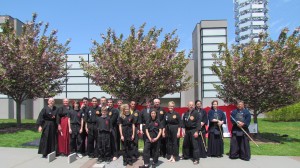
Click on the link above: RyuShuNews_Oya-Te to see our “Family Tree”. This will illustrate the ‘roots, trunk and branches’ of our Ryu Shu Kan Karate.
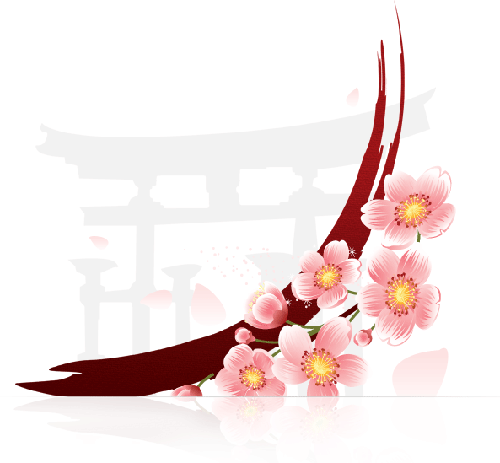
About Gerard Senese, Kyoshi
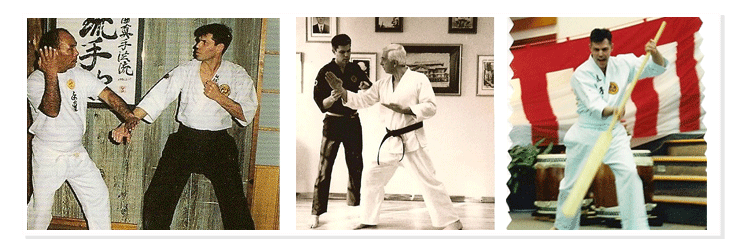 Gerard Senese, Director of the Ryu Shu Kan of Farmingville on Long Island is also Director of the Town of Brookhaven’s Sachem Community Youth Services’ Children’s Karate Program. Senese Sensei began his training in 1974 in Taika Oyata’s art which was called Ryu Kyu Kempo at that time & received his Sho-Dan, 1st degree Black Belt, in 1978.
Gerard Senese, Director of the Ryu Shu Kan of Farmingville on Long Island is also Director of the Town of Brookhaven’s Sachem Community Youth Services’ Children’s Karate Program. Senese Sensei began his training in 1974 in Taika Oyata’s art which was called Ryu Kyu Kempo at that time & received his Sho-Dan, 1st degree Black Belt, in 1978.
He began teaching in 1980 & has been a full time instructor since 1984. He was awarded his 7th degree Black Belt by Taika Oyata in 1998 & was given the titile of “Kyoshi”; in 2004, he received his 8th degree in Taika’s art of Shin Shu Ho Ryu, one of only three Black Belts to be awarded this rank. He has also taught Women’s Rape Awareness programs for Southampton Hospital’s Women’s Center, as well as seminars around the country in the advanced techniques of Taika Oyata’s Life Protection Arts.
Gerard Senese has traveled with Taika Oyata to Washington D.C. to assist with F.B.I. training and also assisted in N.Y.C. at the NYPD Defense Instructor’s academy. Gerard Senese has also traveled to Japan with his wife Hiroko (who is from Shikoku, one of the four main islands of Japan) and to Okinawa with Taika Oyata to further his studies in Japanese/Okinawan culture and philosophy. Together with his wife, they are BOCES Arts-in-Education presenters and appear at public schools on L.I. to share the enjoyment of the Japanese culture through programs of Taiko, folk song and dance.
As executive commitee members of the Japan Center at Stony Brook University, Gerard & his wife direct the community outreach events for the Center. They are the executive producers of the “Sakura Matsuri”-Cherry Blossom Festival- the premiere Japanese cultural event for Long Island; held at the Wang Center at Stony Brook University.
Gerard Senese shares his enthusiasm of the unique art of Taika Oyata with all who show interest in learning the original art of life protection from Okinawa; and together with his wife, Hiroko, also shares his enjoyment of the other aspects of Japanese culture through festivals and workshops they host throughout the year. Below is a picture of Hiroko presenting an Ikebana workshop at North Shore Library & Gerard playing the Shakuhachi.
About Taika Seiyu Oyata
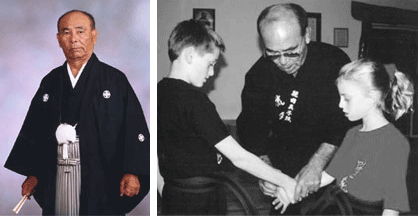 Taika Seiyu Oyata is responsible for introducing to the United States the esoteric (once considered secret) arts of original Okinawan karate: “Tuite Jutsu” and “Kyusho Jutsu”.
Taika Seiyu Oyata is responsible for introducing to the United States the esoteric (once considered secret) arts of original Okinawan karate: “Tuite Jutsu” and “Kyusho Jutsu”.
He is a descendent of Zana Oyakata, a high ranking official of the RyuKyu Kingdom, who was a hero in the Satsuma invasion of RyuKyu in 1609.
Taika Seiyu Oyata began his martial arts training at a very early age as he was shown the Okinawan form of Sumo, “Tegumi” by his father, Kana Oyata, who was the middle weight Tegumi Champion. During World War II he received instruction in Iaido, Kendo, and Judo. After World War II, he began training with Uhugushiku-no-tan-mei, a retired personal guard of the last king of the independent RyuKyu kingdom. The Uhugushiku family was noted for their martial art skills and served the Okinawan ruling class for many centuries. Uhugushiku was known as a “Kakurei Bushi”, ‘Hidden Warrior’, and did not teach outside of family lines or those with no direct connection to the warrior class of Okinawa.
Under Uhugushiku’s tutelage, Taika Oyata learned the principles of weapons fighting, weapons kata and the techniques and concepts of Tuite Jutsu, the secret grappling arts of original Karate. Uhugushiku introduced Taika Oyata to Wakinaguri a descendent from the ancient Chinese families sent to Okinawa as emissaries. Wakinaguri continued to instruct Taika Oyata in the principles of ancient martial arts, most notably, the pressure point strikes of Atemi Jutsu & Kyusho Jutsu. Neither Uhugushiku nor Wakinaguri had descendents to whom they could pass their art; therefore, Oyata became the inheritor of this knowledge. Below is a photo of two ancient Okinawan gentlemen, and, although they cannot be confirmed to be Uhugushiku and Wakinaguri, they fit the description of those two retired Bushi. Note the fans worn in their Obi in the similar fashion as a Samurai sword and the umbrellas held in their hands which could be used very effectively for life protection. Uhugushiku was described as taller than the average Okinawan and Wakinaguri was described as short and stocky, both of these gentlemen fit those descriptions. Their Kimono also appears to be of a style worn by the Bushi class, “Wabi-Sabi” – under-stated elegance but with a utilitarian function.
After the deaths of Uhugushiku and Wakinaguri, Taika Oyata trained with Shigeru Nakamura Sensei (from whom he learned the 12 basic empty-hand kata that are taught in Ryu Shu Kan Karate) and other famous Okinawan Martial Arts Instructors such as Seikichi Uehara.
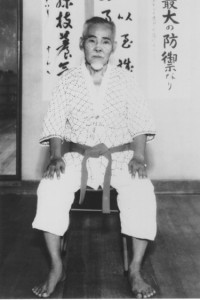 Shigeru Nakamura
Shigeru Nakamura 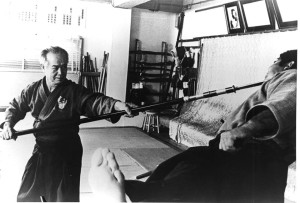 Seikichi Uehara
Seikichi Uehara
In 1977, Taiak Oyata established his headquarters in Kansas City, Kansas. In 1980, Oyata began to broaden the knowledge of the general martial arts public by introducing the concepts of Tuite Jutsu and Kyusho Jutsu throughout America and revitalized the way in which karate is taught and studied today.
Introduction to Ryu Shu Kan Karate
The following explanations were adapted from Tasshi Jim Logue’s website, KuShu.
Ryu Shu Kan Karate is a classical form of karate emphasizing life protection by controlling an opponent without the excessive use of force. The Art includes Tuite Jutsu: grappling, locking, and escape techniques; Kyusho Jutsu: striking techniques that exploit the body’s weak points; Kobudo: weapons kata & techniques and Bogu Kumite: protective armor full-contact sparring.
The Key to learning Ryu Shu Kan Karate is in the Kata and Kata interpretations.
Essence of Ryu Shu Kan Karate: Taika Oyata’s Life Protection Arts
The essence of Ryu Shu Kan Karate is held in the physical characteristics and concepts that developed from the “old ways” of karate.
To develop a clear understanding, the physical aspects of Ryu Shu Kan Karate are divided into 3 categories based on Taika Oyata’s 5 levels of training (see below). These categories can be more fully understood by studying the Japanese terms used below in the descriptions.
- Fundamental – “Oboeru” – memorization. Techniques, Kata, and Concepts are memorized to perfect form, strength, speed and power. This is the foundation of Taika’s Life Protection Arts and allows the kata, drills and techniques to be easily introduced to the student.
- Transitional – “Gei” – Skill. This is the level that most “expert” karate-ka will reach. It’s a level of mastery that requires skill much like that of a master craftsman. Kata, techniques and drills are combined in a natural flow.
- High Level – “Jutsu” – Art. Jutsu is a conscious arrangement of knowledge and intuitive faculties that brings concepts and instinct to realization. It is the melding of the body, mind & spirit in an intuitive and ingenious way such that the techniques flow of their own.
Taika Oyata’s 5 levels of training
The methods to develop the skills necessary for the advancement of the student into a true martial artist are defined in Taika Oyata’s book – RyuTe No Michi. ©-1998
- Learn the sequence of the kata correctly.
- Practice each movement of the kata, slowly, with full power and concentration.
- Practice kata with full speed.
- Combine each movement of the kata with realistic timing, to be applicable for protection techniques.
- Cultivate detailed protection movements, with accuracy and total body control.
Application of Taika Oyata’s 5 level’s of training
The 3 categories of Taika’s Life Protection Arts are attained by combining the 5 level’s of training so that the practitioner develops the life-protection arts in a logical manner, such that the techniques and principles become natural actions.
- Fundamental: Step by step execution of techniques, kata and drills for the purpose of pattern memorization, form and prescribed speed and power. (Levels 1 and 2)
- Transitional: Blending movements into logical sequences to facilitate a more useful combination for techniques. This will become the bare essence of Ryu Shu Kan Karate. (Levels 3 and 4)
- High Level: The real essence of Taika’s art that develops natural reflex actions and abilities. This is the most sophisticated aspect of Taika’s Life Protection Arts which Taika named: Shin Shu Ho. (Level 5)
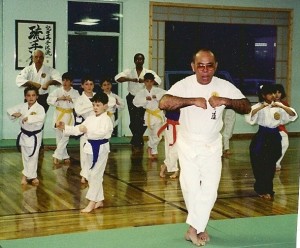
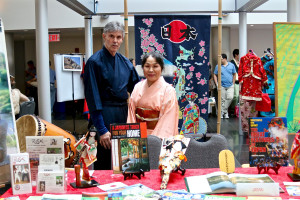
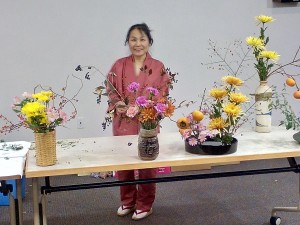
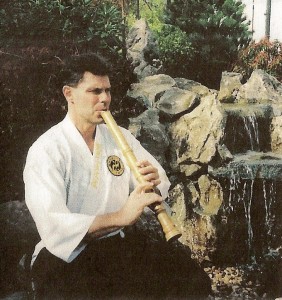
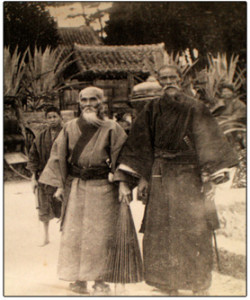
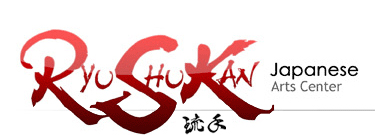 Tel: 631-698-2467
Tel: 631-698-2467